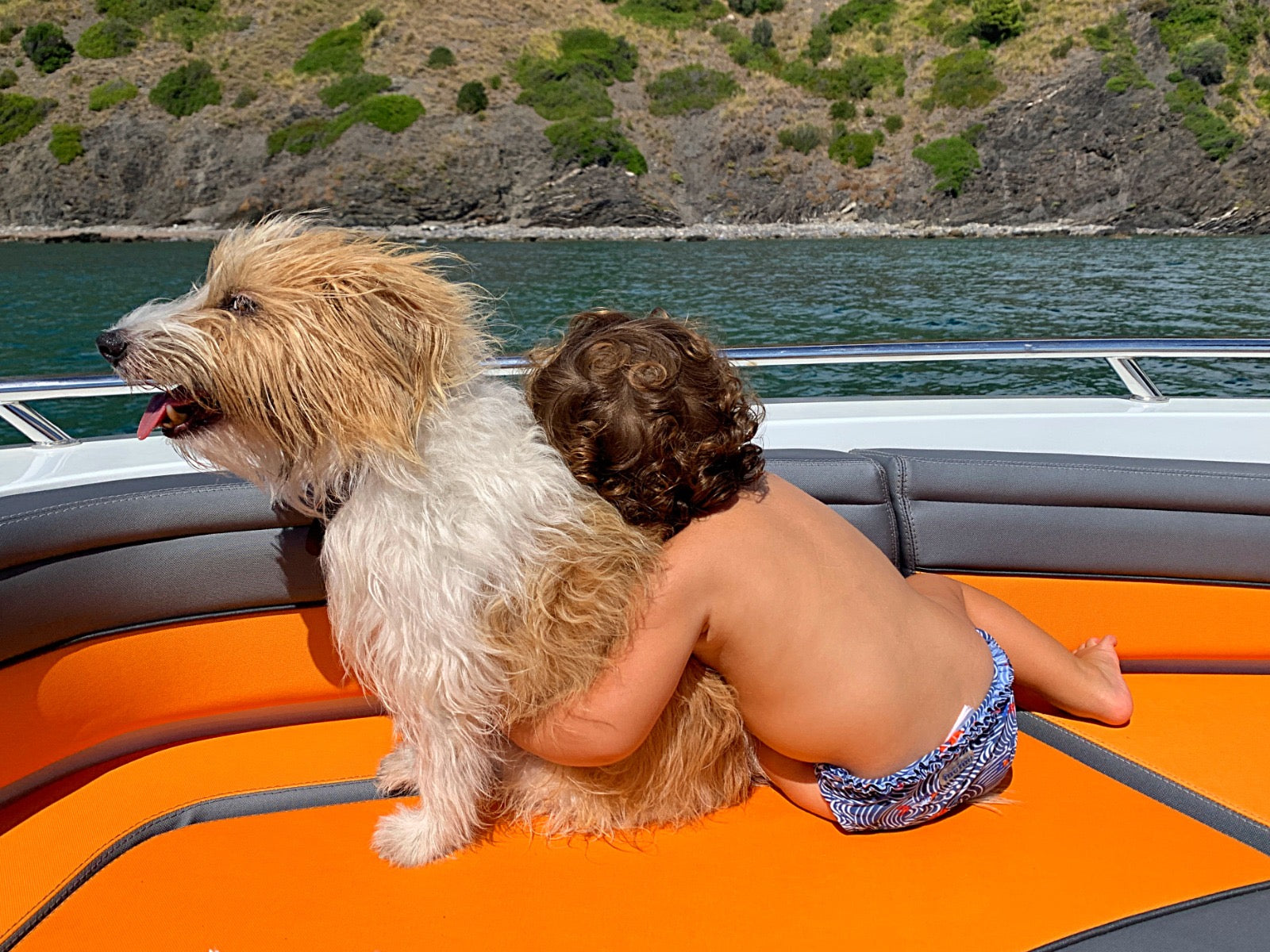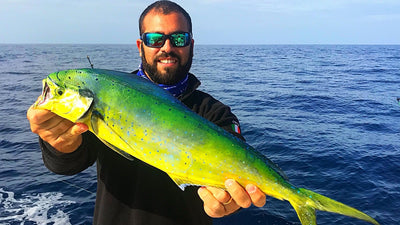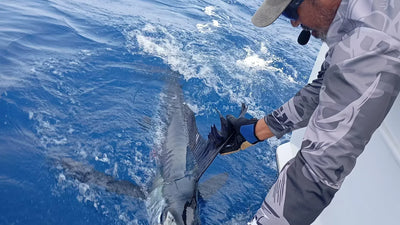Anyone who owns a dog knows perfectly well how these animals can bond in an almost symbiotic way with their owner, so much so that they want the latter to always be in their field of vision... even at the cost of putting up with situations that are not always suited to their nature.
The dog is a gregarious animal, which needs to feel part of a "pack", framing a real family hierarchy, with its own pack leader. Of course, each dog has its own character, but we can say that there are breeds more predisposed to contact with the element of water , so much so that they are perfectly at ease diving from a boat and swimming , and others more suited to a life in the countryside. Usually, breeds that love water are also those selected for jobs in contact with the liquid element, such as sea rescue, or for hunting in environments that include lakes or rivers. Other breeds, perhaps selected to sniff out tracks, may not like contact with water, preferring places where they can vent their predatory instinct. Obviously there are always the necessary exceptions and, in any case, a dog always tries to follow its pack leader, wherever the latter goes, even if the destination is not congenial to it. Now, let's face it, a dog that finds himself with a fisherman as an owner, who from time to time forces him to wake up at unreasonable times and spend long days on a boat, perhaps in the middle of winter, will certainly have a harder time than a dog of his kind who is lucky enough to have an owner who is passionate about mountain walks! Jokes aside, life on board for a rod can be pleasant, but it could also turn into useless torture, if you don't take into account some precautions for his well-being.
Getting him used to the boat
Some dogs may not particularly enjoy life on board and suffer from seasickness, just like a human being. Unlike people, who can show their discomfort in different ways, especially by expressing themselves with words, we must be careful to notice certain alarm bells in dogs : low vitality , shortness of breath , excessive salivation . When these symptoms appear, it will be necessary to immediately stop sailing and return to port or the nearest mainland . Therefore, in order to avoid planning a long transfer, or a whole day on a boat in the company of our four-legged friend, and having to interrupt it due to the onset of a state of discomfort in the animal, it would be preferable to take " preventive " trips , initially of very short duration, and gradually increase them to ensure that the animal gradually gets used to certain conditions.
 The needs on the ground
The needs on the ground
Every dog has certain needs, among which we cannot ignore the need to go for a short walk to do his business on land . Generally speaking, a dog that lives in an apartment needs to go out for his business at least three times a day... and if it is true that many dogs are used to resisting even more than 12 hours, we cannot consider this normal. It is also true that if we plan to go out on a boat, and there is no one at home who can take care of our dog, taking him with us will certainly allow him to spend the day in company and also go for a short walk before going out on the boat and immediately upon returning . If our trip to sea is expected to be very long, we could sacrifice an hour of sleep and take our friend for a long walk before casting off... or plan a stop in the middle of the day, even near a beach, perhaps using the tender or inflatables to transport him to land. In the summer it could be an opportunity for a relaxing break for us too... after all, the beauty of taking care of a dog is also in the fact that it forces us, inevitably, to find time to take a break from everything and dedicate ourselves to his needs .

Comfort…
Once we have ascertained that our quadruped has adapted well to life on board and, in fact, even during the adaptation itself, we should not neglect many precautions that will contribute to making his day pleasant. Analyzing the needs of a dog, we should keep in mind that a good shaded area with a comfortable cushion will be essential , where he can rest without suffering particularly from the heat, obviously with a bowl of water always available , to be changed often to keep it always fresh ... while food will not always be appreciated during navigation: it could happen that they prefer to feed in calmer and more familiar conditions , perhaps once on land or, even better, when returning home . If our boat has a cabin , let's not deny them entry: it could represent an area for him where he can feel safe and at ease, resting in the shade.
…and safety on board
Much depends on the vessel, for example, has very low walls or narrow passages to get to the bow , or if it is a dinghy , but in general when sailing, especially at high speed, it would be preferable to have your dog wear a special life jacket to avoid danger in the event of an accidental fall into the sea .
Another danger that should not be overlooked is the hooks : the minnow treble hooks , for example, as well as the ever-treacherous sabiki , not to mention when using natural baits that could be swallowed in a moment of distraction... for this reason it would be a good idea to always place the hooks in places that the dog cannot reach , also taking care not to leave loose lines in the well , where they could get caught and drag along any terminals with hooks.
In conclusion, we can say that our four-legged friends, if well-educated and accustomed, can be a companion on the boat as well as in life , and for them the days spent fishing could also be very pleasant, perceiving and identifying with the well-being and tranquility of their owner, as well as in moments of happiness. For example, when I happened to take my dog up high, he seemed to spend time watching the bait in the wake, barking when we started... almost as if he wanted to cheer with me!



